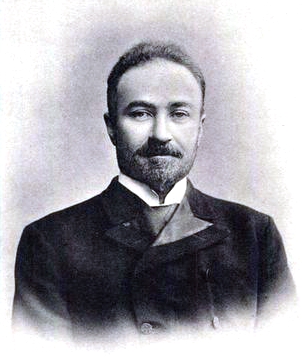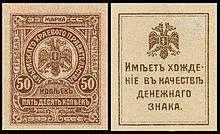
Crimea is a peninsula in Eastern Europe, on the northern coast of the Black Sea, almost entirely surrounded by the Black Sea and the smaller Sea of Azov. The Isthmus of Perekop connects the peninsula to Kherson Oblast in mainland Ukraine. To the east, the Crimean Bridge, constructed in 2018, spans the Strait of Kerch, linking the peninsula with Krasnodar Krai in Russia. The Arabat Spit, located to the northeast, is a narrow strip of land that separates the Syvash lagoons from the Sea of Azov. Across the Black Sea to the west lies Romania and to the south is Turkey. The population is 2.4 million, and the largest city is Sevastopol. The region has been under Russian occupation since 2014.

Several different governments controlled the Crimean Peninsula during the period of the Soviet Union, from the 1920s to 1991. The government of Crimea from 1921 to 1936 was the Crimean Autonomous Socialist Soviet Republic, which was an Autonomous Soviet Socialist Republic within the Russian Soviet Federative Socialist Republic (SFSR); the name was altered slightly to the Crimean Autonomous Soviet Socialist Republic from 1936 to 1945.

The flag of Crimea is the flag of the Autonomous Republic of Crimea in Ukraine and the Republic of Crimea controlled by Russia. The flag was officially adopted on 24 September 1992 as the flag of the Republic of Crimea, readopted on 21 April 1999, then readopted on 4 June 2014 as the flag of the Republic of Crimea, annexed by the Russian Federation.

Taurida Governorate was an administrative-territorial unit (guberniya) of the Russian Empire. It included the territory of the Crimean Peninsula and the mainland between the lower Dnieper River with the coasts of the Black Sea and Sea of Azov. It formed after the Taurida Oblast was abolished in 1802 during Paul I's administrative reform of the territories of the former Crimean Khanate, which were annexed by Russia from the Ottoman Empire in 1783. The governorate's centre was the city of Simferopol. The name of the province was derived from Taurida, a historical name for Crimea.

The Southern Front was a military theater of the Russian Civil War.

The recorded history of the Crimean Peninsula, historically known as Tauris, Taurica, and the Tauric Chersonese, begins around the 5th century BCE when several Greek colonies were established along its coast, the most important of which was Chersonesos near modern day Sevastopol, with Scythians and Tauri in the hinterland to the north. The southern coast gradually consolidated into the Bosporan Kingdom which was annexed by Pontus and then became a client kingdom of Rome. The south coast remained Greek in culture for almost two thousand years including under Roman successor states, the Byzantine Empire (341–1204), the Empire of Trebizond (1204–1461), and the independent Principality of Theodoro. In the 13th century, some Crimean port cities were controlled by the Venetians and by the Genovese, but the interior was much less stable, enduring a long series of conquests and invasions. In the medieval period, it was partially conquered by Kievan Rus' whose prince Vladimir the Great was baptised at Sevastopol, which marked the beginning of the Christianization of Kievan Rus'. During the Mongol invasion of Europe, the north and centre of Crimea fell to the Mongol Golden Horde, and in the 1440s the Crimean Khanate formed out of the collapse of the horde but quite rapidly itself became subject to the Ottoman Empire, which also conquered the coastal areas which had kept independent of the Khanate. A major source of prosperity in these times was frequent raids into Russia for slaves for the Crimean slave trade.
As of January 2021, the estimated total population of the Republic of Crimea and Sevastopol was at 2,416,856. This is up from the 2001 Ukrainian Census figure, which was 2,376,000, and the local census conducted by Russia in December 2014, which found 2,248,400 people.

Maciej Sulkiewicz was an Imperial Russian lieutenant general, Prime Minister of Crimean Regional Government (1918), and Chief of General Staff of Azerbaijani Armed Forces in 1918–20.

The Ukrainian War of Independence, also referred to as the Ukrainian–Soviet War in Ukraine, lasted from March 1917 to November 1921 and was part of the wider Russian Civil War. It saw the establishment and development of an independent Ukrainian republic, most of which was absorbed into the Ukrainian Soviet Socialist Republic between 1919 and 1920. The Ukrainian Soviet Socialist Republic was one of the constituent republics of the Soviet Union between 1922 and 1991.

The Crimean People's Republic or Crimean Democratic Republic was a self-declared state that existed from December 1917 to January 1918 in the Crimean Peninsula. The Republic was one of many short-lived states that declared independence following the 1917 Russian Revolution caused the collapse of the Russian Empire.

Solomon Samuilovich Krym was a Crimean politician, statesman and agronomist of Crimean Karaite origin.

The Taurida Soviet Socialist Republic was an unsuccessful attempt to establish a Soviet republic situated in the Crimean Peninsula part of Soviet Russia. The republic was established by Bolsheviks Jan Miller and Anton Slutsky who previously participated in the Petrograd Bolshevik Revolution.
The Crimean Socialist Soviet Republic or the Soviet Socialist Republic of the Crimea was a state allied with Soviet Russia that existed in Crimea for several months in 1919 during the Russian Civil War. It was the second Bolshevik government in Crimea and its capital was Simferopol.
Crimea, or the Crimean Peninsula, historically also known as the Tauric Chersonese, is a major peninsula in the north of the Black Sea.

The Autonomous Republic of Crimea is an administrative division of Ukraine encompassing most of Crimea that was unilaterally annexed by Russia in 2014. The Autonomous Republic of Crimea occupies most of the peninsula, while the City of Sevastopol occupies the rest.

In February and March 2014, Russia invaded the Crimean Peninsula, part of Ukraine, and then annexed it. This took place in the relative power vacuum immediately following the Revolution of Dignity. It marked the beginning of the Russo-Ukrainian War.

On 18 March 2014, Russian president Vladimir Putin gave a speech to both chambers of the Federal Assembly of the Russian Federation in connection with the request for admission by the Crimean parliament of the republic in the Russian Federation. He spoke in the St. George Hall of the Grand Kremlin Palace in the Moscow Kremlin.

The Crimea Operation was a combined military offensive by Imperial German and Ukrainian forces in April 1918 against the Taurida Soviet Socialist Republic.

Amet Seid Abdulla oğlu Özenbaşlı was a Crimean Tatar politician and writer. A leading member of the Crimean Tatar nationalist movement and a minister in the Crimean People's Republic, he was later involved in the Crimean Tatar community in the Soviet Union. After supporting Crimean Tatar collaboration with Nazi Germany during World War II, he was sentenced to 25 years in prison, but was released in 1955. Following his prison service, he lived in Tajikistan until his death.

Cafer Seydamet, also known by his adopted surname Qırımer, was a Crimean Tatar politician and writer who was one of the founders and leaders of Milliy Firqa and Crimean People's Republic. He served as Prime Minister and Director of Foreign and Military Affairs in the Crimean People's Republic, and maintained the latter role within the Crimean Regional Government.



















